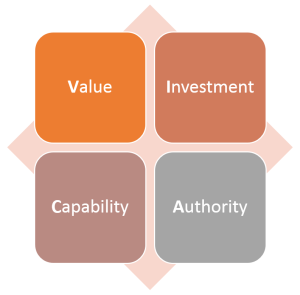Many CW programs existed for years — some for almost two decades. In the earlier days, program decisions were driven by cost savings and risk mitigation priorities. VMS/MSP providers would blindly guarantee 20% cost savings as a way to persuade buyer organizations to move forward with implementing a CW management program. The CW program’s value proposition was limited at the time and short-lived with this minimal strategic mission. Things have changed remarkably since then and continue to change drastically for today’s fundamental CW program value propositions.
SIA maintains extensive relationships with leading buyer organizations from some of the largest industry brands in the world. Our conversations are often centered around whether they should decide to do something new or discontinue something that no longer adds value to their organizations. These interactions have resulted in a list of strategic criteria for buyers to consider when making core, mission-based decisions for their CW program.
 Generally speaking, there are four major elements in this strategic decision-making methodology: value, investment, capability and authority, or VICA.
Generally speaking, there are four major elements in this strategic decision-making methodology: value, investment, capability and authority, or VICA.
Here’s a quick breakdown of each element.
- Value. Can you provide value to the current AS-IS state of your program based on what you want to achieve / implement / propose / remove, etc. Value can be linked to cost savings (with known hard and soft criteria), improved efficiency, risk mitigation or improved quality (program, talent, supplier, quality).
- Investment. Is your organization prepared and willing to invest in this strategic change? Investment can be as simple as allocated time to complete something to actually writing a check and/or adding new resources such as partners to additional CW program headcount.
- Capability. Are you capable of executing this change? This is not a performance perspective as much as an ability to deliver this new planned value consistently over time at the performance level targeted.
- Authority. Do you or does your leadership have the authority to execute recommended changes and support the required investment in the capability enhancements required?
Often, programs make decisions without considering these four pillars of strategic decision-making. In fact, when any element is left out or is unattainable, the planned action will likely fail to drive the program forward. Failure may not be recognized for weeks, months or maybe even years.
Take, for example, programs looking to take on direct sourcing, which is a hot topic within SIA’s CWS Council.
Direct Sourcing: A service segment of the contracting/consulting industry, directly sourced contingent workers include independent contractors/consultants, temporary workers sourced from an internally developed pool of talent and others such as summer interns, seasonal workers, retirees and other contingent workers not sourced from a third-party staffing supplier. In a direct sourcing model, a company most often finds talent and administers the talent pool, but may engage a third party (MSP, payrolling partner) to do so as well.
Those that have executed some level of direct sourcing in their CW program have captured some meaningful value in terms of cost effectiveness, talent quality improvement and speed to CW solution. But without careful strategic decision-making around a direct service initiative concerning the targeted value; the required investments; the development of new capabilities; and, the organizational authority to empower the addition of direct sourcing” to the program, the success of the initiative will be limited or ultimately fail.
Buyer organizations need to strongly consider the VICA strategic decision-making elements to ensure they can and will be successful. Creating a small project team who can check the boxes within VICA will help reduce the opportunity for failure. Consistent methodologies are important for buyer organizations to consider as they manage the rapid evolution of their CW programs in an effort to stay competitive in the marketplace.









